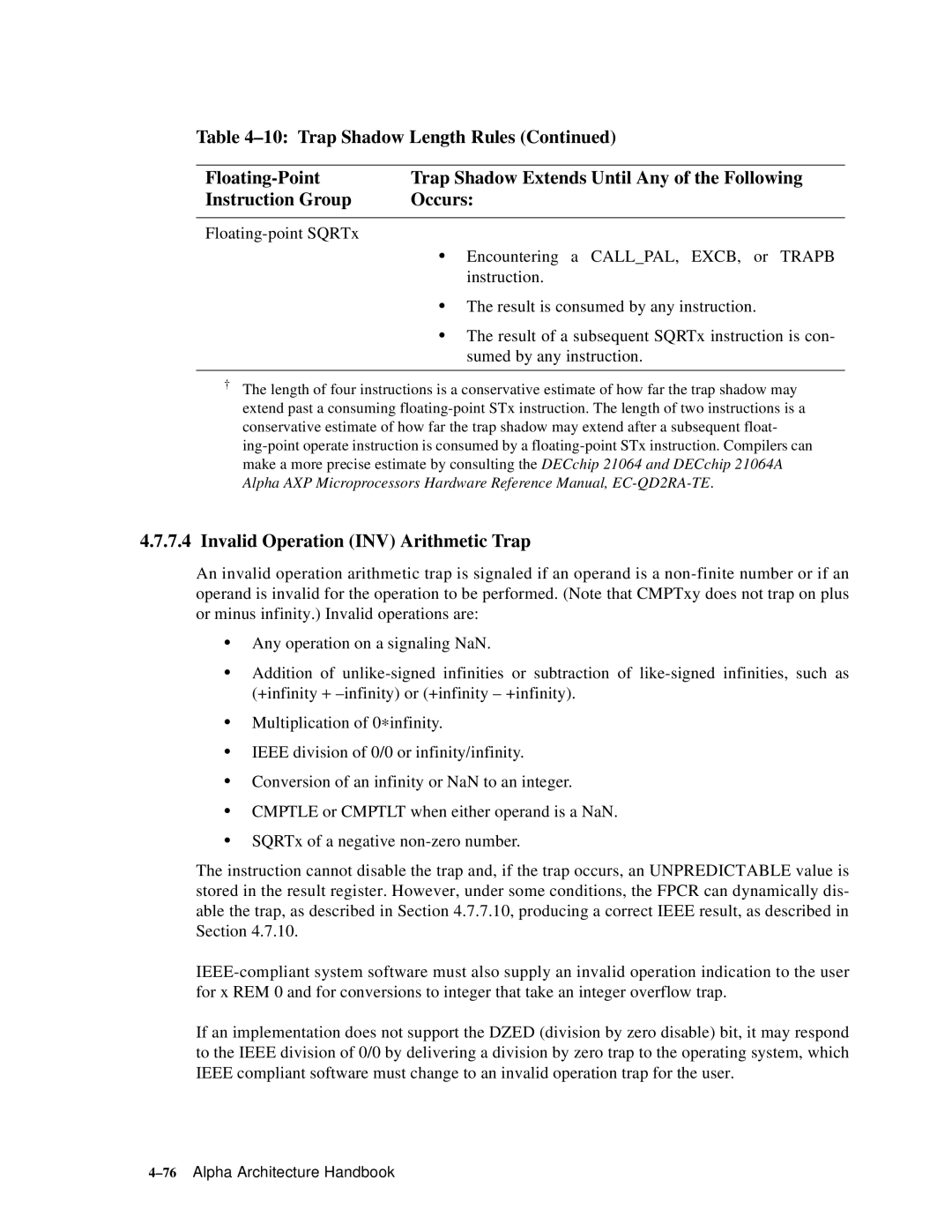
Table
Trap Shadow Extends Until Any of the Following | |
Instruction Group | Occurs: |
•Encountering a CALL_PAL, EXCB, or TRAPB instruction.
•The result is consumed by any instruction.
•The result of a subsequent SQRTx instruction is con- sumed by any instruction.
†The length of four instructions is a conservative estimate of how far the trap shadow may extend past a consuming
4.7.7.4Invalid Operation (INV) Arithmetic Trap
An invalid operation arithmetic trap is signaled if an operand is a
•Any operation on a signaling NaN.
•Addition of
•Multiplication of 0∗infinity.
•IEEE division of 0/0 or infinity/infinity.
•Conversion of an infinity or NaN to an integer.
•CMPTLE or CMPTLT when either operand is a NaN.
•SQRTx of a negative
The instruction cannot disable the trap and, if the trap occurs, an UNPREDICTABLE value is stored in the result register. However, under some conditions, the FPCR can dynamically dis- able the trap, as described in Section 4.7.7.10, producing a correct IEEE result, as described in Section 4.7.10.
If an implementation does not support the DZED (division by zero disable) bit, it may respond to the IEEE division of 0/0 by delivering a division by zero trap to the operating system, which IEEE compliant software must change to an invalid operation trap for the user.
